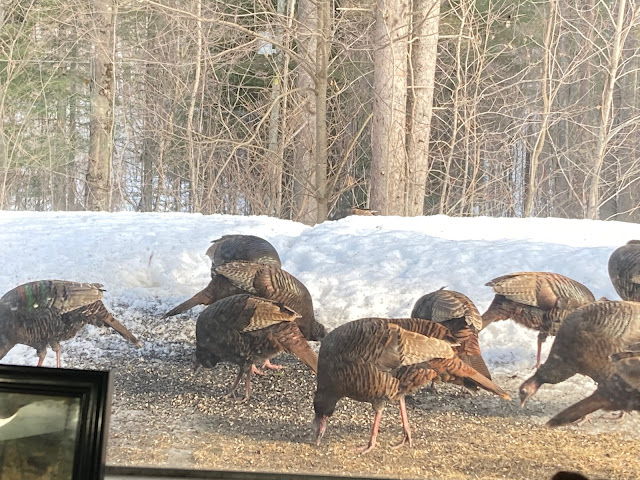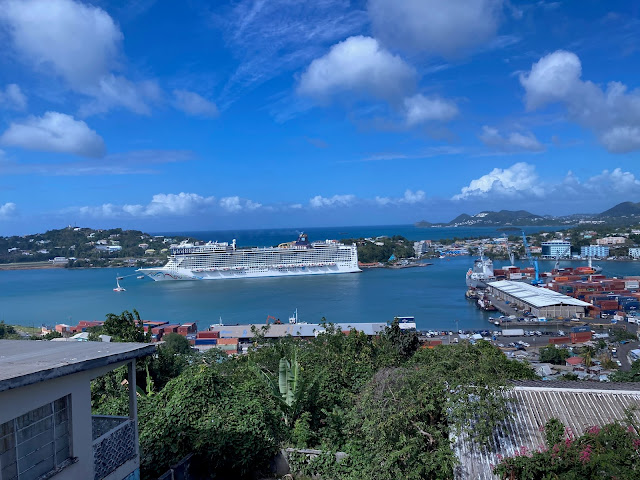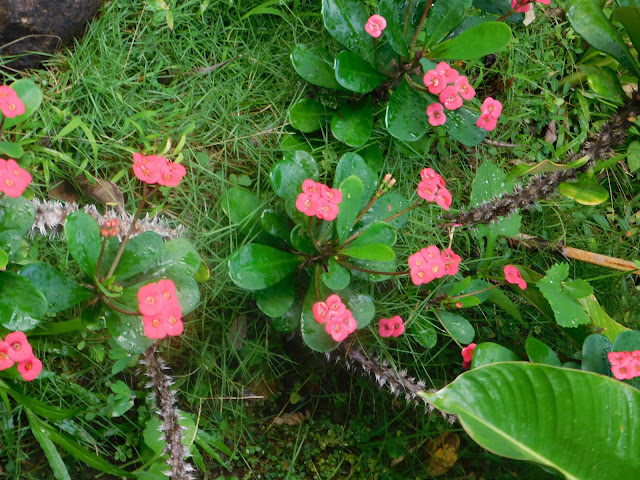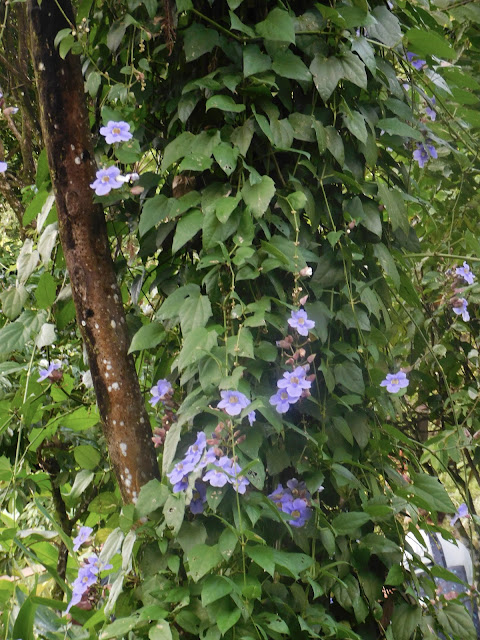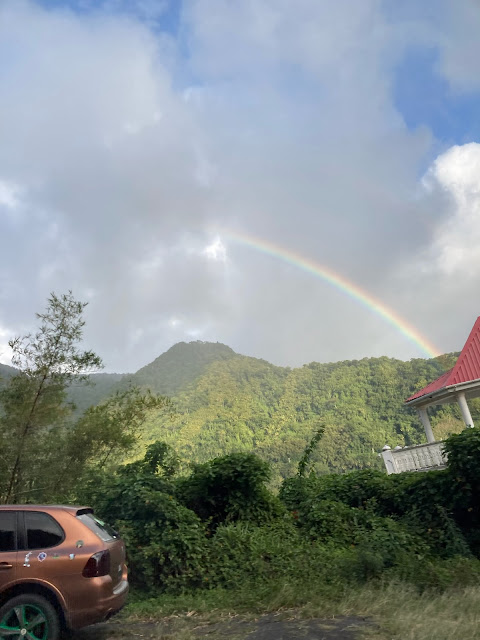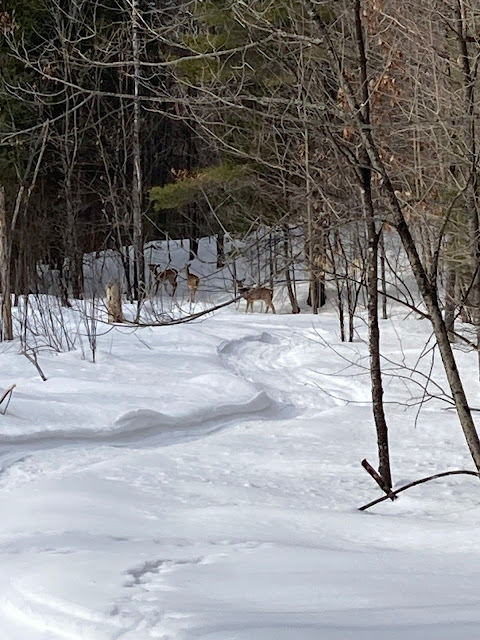Our third port was Bonaire, the B in the ABC islands. Like the others, tourism is essential for the economy and it is one of the most popular diving spots in the Caribbean. All around the island are yellow stones, marking diving spots. I was sure we had a picture of one, but I can't find it. Bonaire is special municipality of the Netherlands, and it uses the US dollar as currency. About 20 000 people live on the island. It is famous for it's flamingos and while we saw a lot, we didn't get a good picture.
Our tour, driven by a local guide, started on the north of the island where the first European settlers arrived. For the first few years, slaves were required to walk the 3 hours one way daily, to the salt fields.
Our first stop was a church that slaves had carved out of a cave. After nearly 100 years, it is still in use.
 |
| The church |
 |
| As there is no spot of stained glass, stories from the Bible are presented around the church like this. |
 |
| View from the top of the church |
Our next stop was a museum.
This traditional house, showed off how the wealthier people lived on the island over the past 130 years. It is also where we tried a cactus alcohol.
 |
| It had very low doors. |
Around the museum, as in many parts of the island we saw cactus fences.

 |
| I wish I remembered the name of this plant |
 |
| On the drive we say many donkeys |
 |
| We also passed a place where they were land sailing. |
Our last stop was the salt fields. Fun fact, they are currently owned by a Canadian company and all the salt is sent to Canada for further processing.
 |
| The ponds are pink because of a microorganism that makes them that colour |
As mentioned earlier, when they first arrived, the slaves were required to walk 6 hours per day to and from work. After a few years, slave houses were built across from the salt fields.
 |
| I didn't like posing by them, as I felt it made it an 'attraction' and I wanted to capture how small the house was, so I used me as a marker. |
 |
| inside |
I took some time standing in a stunningly beautiful spot on the planet to sit with slavery and all of the misuse of humans, historical and present. I didn't want to get lost in the misery that can come from such thoughts. I held it, and resolved to remember and do what I can to make the world a better place.
 |
The horror and the beauty.
Accepting two things can be true at the same time.
This felt like a heavy post, and as a historian at heart, I think it is important for us to all acknowledge our shared histories - the good, the bad and the ugly. Next week's post, a visit to St. Lucia, will be back to looking at nature. |
------
Reminder to click
HERE to join our when will the snow be gone contest!
